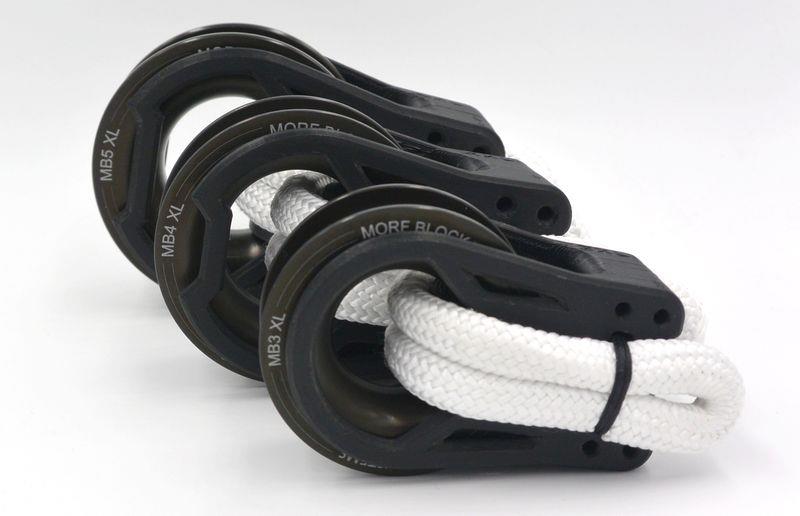
The Evolution of the Morf Block: Product Update
by Kerri Robson, Upffront 8 Oct 2018 08:10 UTC

Morf Block © G Yacht Design
Founded and forged by G Yacht Design, the Morf Block concept materialised as a DIY block. The kit - comprised of the block cheeks, plain bearing and Dyneema® attachment - allowed purchasers to build their own blocks, using the lash thimble of their preference. Appealing to riggers, amongst others, the kit was sold in a number of sizes, with each size suitable for several brands of lash thimble. However, now, things have evolved.
Morf Block, who are enthusiastic about using recyclable and bio materials, have ceased the sales of their DIY kits. Instead, Morf Block have created an aluminium lash thimble that is perfectly optimised to work in conjunction with the Morf Block cheeks and bearing.
This fine-tuned lash thimble is available to purchase as part of a complete block. The ready-to-go block consists of four components – the cheeks, the bearing, the lash thimble (the sheave) and the Dyneema® loop – and is said to be one of the lightest and strongest blocks on the market.
But what makes the Morf Block so lightweight?
The cheeks and bearing are 3D printed out of a low friction, UV stable material that enables the blocks to be agile and featherweight. Here at Upffront.com, we find this particularly intriguing: we are passionate about improving performance, which for us means lighter, faster and safer sailing. The lightweight block will reduce weight on the boat, allowing it to go faster, with less load in the rig. This increases safety factors and reduces maintenance - a win-win!
Moreover, the modular design of the Morf Block – which is patented – is also unique. The blocks can be joined together without tools, facilitating a light set up, for multiple applications.
Morf Block have also expanded their range, now offering two block specifications: "High Performance" and "High Load". The distinguishable feature of each product is the material of the plain bearing.
The High Load range has been optimised for stronger loads at a lower speed. The bearing is constructed from a high load material with self-lubrication, and the High Load block is best suited for semi-static lines such as halyards and runners (although it can be used on any). The block also benefits from a 25% increase in SWL - in comparison to the High Performance range - and is manufactured in black, although custom colours are available.
In contrast, the High Performance block utilises a self-lubricating bearing material that has 35% lower coefficient of friction (in comparison to the Hi Load range). As a result, the rope in the block will run faster at lower loads, with the High Performance block able to achieve double the RPM of the High Load block. Consequently, the block is suited for more dynamic lines in constant movement, such as control lines and sheets. The High Performance block is manufactured in black with a yellow bearing, with custom colours available.
Intrigued, but concerned about credibility? The blocks have been used on the TP52 Algere, as well as two Class 40s; sailing at grand-prix race standard, the adoption of Morf Blocks on these sailboats can only be said to endorse their performance.
Are you onboard with Morf Blocks ?